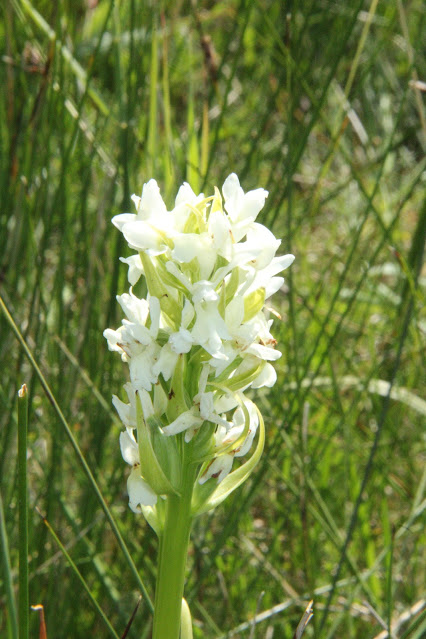The platinum orchid. Or, Dactylorhiza incarnata ochroleuca
The Dactylorhiza incarnata ochroleuca orchid, or, as I began to call it recently, the platinum orchid, is easily the rarest orchid I have ever seen in the wild.
The credentials of the Serapias bergonii I saw last year in Suffolk are dubious at best, and even then it seems to have failed to flower this year, unfortunately, in which case it was never a true part of the British flora, irrespective of how it arrived here.
The platinum orchid is a beautiful, critically endangered orchid which is in serious danger of extinction in the UK. Perhaps only 30 flowering spikes remain, and despite intensive conservation measures, my outlook for this beautiful orchid is very pessimistic. To my knowledge, only 4 sites remain for this species in the UK, and are closely-guarded secrets. One of them is where perhaps the bulk of the population grows. The two others are guesswork in my eyes as to where they are, and a lot of conservation work is being done there. And it seems to be extinct in the fourth place, once easily the best nature reserve to see them, as well as its last Cambridgeshire site.
Fortunate enough to know where to find this orchid and not willing to accept the risk of being too late to see it in flower, as what nearly happened with the lady orchids, I set out to see it. And initially, I was exceptionally disappointed. There were some platinum orchids present, but far fewer outside the fence than last year. Eventually it would emerge I missed some hiding in the tall reeds nearby, however. In the fenced off area, there was a single clump, but a count of 17 plants for the entire reserve is, unfortunately, very small. I do not think this species will survive longer unless the conservation work at the two secret sites is progressing better than I think.
Every time I visit this place, I worry that it was the last time I saw this orchid. I was wrong the other 2 times, so I hope I will be wrong again when I think that now. And all of the orchids I found disappointed me as they were 'scrawny'. But eventually I tracked down a pristine example, hidden incredibly well in the vegetation here.
Finally distracting myself from these orchids, I went elsewhere. I was shocked to discover three other platinum orchids growing on the same reserve, but in a different part. I did not see them there last year. Maybe it is indeed going better than I think. Satisfied, I went on to look for marsh helleborines. That is a story for July to tell. And there were no developing marsh fragrant orchids in sight.
The platinum orchid is extremely rare, and its position seems to become more perilious every year. But that can still be reversed. For the red helleborine, another orchid which I have set my sights on for this summer, the situation is far worse. Again, a story for another time, in the end of June when I'll finally look for it.








Comments
Post a Comment